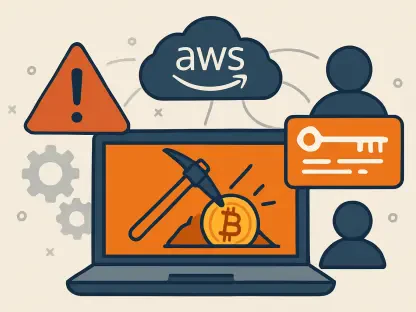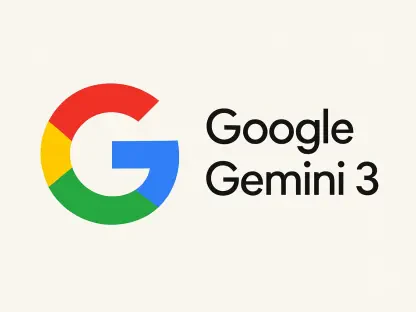In an era where technology evolves at breakneck speed, a groundbreaking approach known as vibe coding has emerged as a game-changer in software engineering, redefining the very nature of how developers craft solutions and pushing the boundaries of innovation. This innovative method, introduced by a prominent former OpenAI researcher earlier this year, shifts the focus from traditional, syntax-heavy programming to a more intuitive process where advanced AI models interpret natural language prompts to generate code based on high-level ideas and intent. Instead of laboring over every line, developers now act as strategists, guiding AI tools to handle repetitive tasks while they concentrate on creativity and innovation. This transformation is not just a fleeting trend but a fundamental shift that promises to reshape productivity, career paths, and even the accessibility of software development. As the industry grapples with both the opportunities and challenges of this paradigm, it’s clear that vibe coding is setting a new standard for what it means to build software in today’s fast-paced digital landscape.
Transforming Productivity and Innovation
Unleashing Speed Through AI Collaboration
The most striking impact of vibe coding lies in its ability to turbocharge productivity among developers, particularly those with years of experience under their belts. Recent surveys reveal that senior engineers now rely on AI for over half of their code, enabling them to ship projects at a rate 2.5 times faster than before with the aid of sophisticated tools. This leap in efficiency stems from AI’s capacity to handle foundational and repetitive coding tasks, freeing up human talent to tackle complex problem-solving and strategic planning. Interviews with seasoned professionals highlight a newfound role akin to that of an editor, where they refine and perfect AI-generated drafts rather than starting from scratch. This shift not only accelerates development cycles but also allows for rapid iteration, giving companies a competitive edge in delivering solutions to market. The data speaks volumes, with many developers reporting a dramatic reduction in time spent on mundane tasks, paving the way for a deeper focus on innovation and design.
Empowering Startups with Rapid Prototyping
Beyond individual productivity, vibe coding has become a catalyst for innovation, especially within the startup ecosystem where speed is often the difference between success and failure. Industry insights show that a significant portion of newly funded startups boast codebases that are almost entirely AI-generated, a testament to how this approach facilitates quick prototyping and deployment. Platforms tailored for vibe coding enable even small teams to build robust applications in record time, leveling the playing field against larger competitors with more resources. This democratization of development means that ideas can be tested and refined at an unprecedented pace, fostering a culture of experimentation. For emerging businesses, the ability to pivot swiftly based on market feedback without getting bogged down in coding minutiae is invaluable. As a result, vibe coding is not just enhancing efficiency but also redefining how entrepreneurial ventures approach software creation, making technology a more accessible tool for turning visions into reality.
Navigating Challenges and Future Horizons
Addressing Risks of Skill Erosion and Security
Despite its many advantages, vibe coding introduces a set of challenges that cannot be ignored, particularly around the potential erosion of core programming skills among newer developers. Critics argue that an over-reliance on AI tools risks creating a generation of professionals who lack the ability to debug or maintain complex, legacy systems without machine assistance. Research points to a concerning gap between perceived productivity gains and actual setbacks caused by the need to correct AI errors, which can sometimes slow down projects more than anticipated. Additionally, security vulnerabilities in hastily generated code pose a significant threat, as rushed outputs may overlook critical safeguards. Social media discussions among industry leaders emphasize the importance of nuanced skills in managing AI limitations, a capability that non-technical individuals might struggle to acquire. These concerns underscore the need for a balanced approach where technological reliance does not come at the expense of fundamental expertise or system integrity.
Bridging Generational Divides in Adoption
Another layer of complexity in the rise of vibe coding is the generational divide it reveals within the software engineering community, highlighting differing priorities and comfort levels with AI integration. Senior developers tend to embrace this shift, finding satisfaction in their evolving role as overseers who focus on high-level strategy while AI handles the grunt work, even if reviewing machine outputs can be tedious. In contrast, junior developers often remain cautious, prioritizing traditional coding practices to build a strong foundation of technical knowledge before leaning on automated tools. This divergence suggests that while speed and innovation drive the enthusiasm of experienced professionals, newer entrants to the field are more focused on long-term skill development. Such a split in perspectives indicates that the adoption of vibe coding may require tailored approaches to training and mentorship, ensuring that all levels of expertise can benefit from AI advancements without sacrificing essential learning or creating disparities in capability.
Envisioning a Hybrid Path Forward
Looking back, the journey of vibe coding over recent months reflects a dynamic tension between revolutionary potential and practical pitfalls, shaping a narrative of cautious optimism. The undeniable boosts in productivity and the empowerment of non-traditional developers stand as testaments to its transformative power, especially for startups and seasoned engineers who adapted swiftly to AI-driven workflows. Yet, the risks of skill dilution, security lapses, and the generational divide in adoption paint a more complex picture, reminding the industry that innovation demands vigilance. As this paradigm gains traction, the consensus leans toward a hybrid model where AI’s efficiency is tempered by human judgment and expertise. Moving forward, the focus should shift to developing robust training programs that blend traditional coding fundamentals with vibe coding proficiency, alongside stricter protocols for reviewing AI outputs. By fostering this balance, the software engineering field can harness the full potential of this cultural shift, ensuring that technology amplifies human ingenuity rather than replacing it.









